ID 1349783
Lot 132 | FLINDERS, Matthew (1774-1814)
Valeur estimée
£ 60 000 – 80 000
A Voyage to Terra Australis; undertaken for the purpose of completing the discovery of that vast country, and prosecuted in the years 1801, 1802, and 1803, in his Majesty's Ship the Investigator. London: W. Bulmer and Co. for G. and W. Nicol, 1814. [Vol. I only]
First edition with pencil annotations and corrections across 39 pages in an unidentified early hand. Flinders’ account of the first circumnavigation of Terra Australis is ‘the most outstanding book on the coastal exploration of Australia … Such is the historical importance of this monumental work that no general collection of Australian books can be considered complete without it’ (Wantrup, p.144). The first volume opens with a long introduction covering the history of voyages of exploration to Australia from the yacht Duyhen in 1605 to Bligh in 1791, as well as Flinders’ coastal surveying voyages with George Bass in 1795-1797 which determined the existence of Bass Strait, and ends with an account of the circumnavigation until July 1802.
In 1810, upon returning to London after nearly 7 years of captivity on Mauritius, Flinders set to work with haste on completing his account of the voyage and the accompanying charts. In the last few months of his life, while increasingly ill with a bladder complaint, Flinders laboriously corrected proofs of his Voyage until it was finally ready for publication in July 1814. The traditional account holds that the finished book was delivered to Flinders the day before he died, by which time he was already unconscious, so his wife ‘took the volumes and laid them upon his bed, so that the hand that fashioned them could touch them’ (Scott). However, recent biographies agree that he was aware of the finished product. Indeed, a letter from his wife confirms that ‘he lived just to know, the work over which his life had been spent was laid before the World, for he left this earthly scene of things, a few days after its publication’ (quoted in Estensen, p.470).
In the context of Flinders’ assiduous revisions and in the knowledge that he lived long enough to see the published text, the existence of the present volume is most intriguing. The annotations are evidently not in Flinders’ hand, yet in some cases they appear to be authorial in nature. For example, a correction to p.36 changes the text from ‘At this time we had not a single person in the sick list’ to ‘At the end of three months we had not a single person in the sick list’. An annotation to p.160 provides a set of geographical co-ordinates, while another makes sweeping changes to a table of native vocabulary, and others appear to provide thematic shoulder notes and instructions for moving whole passages elsewhere in the text. One appears to impose moral censure on a comment relating to native interest in the opposite sex. In the absence of a second edition, it is impossible to know whether these amendments were regarded as the will of the author, but the direct family provenance recommends that this must remain a possibility.
Estensen, The Life of Matthew Flinders; Ferguson 576; Hill 614; Ingelton 6487; Kroepelien 438; Nissen BBI 367; Scott, The Life of Captain Matthew Flinders, R.N; Stafleu & Cowan TL2 1806; Wantrup 67a; Tooley, Mapping of Australia, pp.77-79.
Quarto (320 x 250mm). 4 engraved plates by William Westall (lacking half-title, title detached and heavily soiled and chipped with partial loss to imprint, some soiling and staining to margins of prelims, small hole in dedication leaf, small wormhole in text through most of volume, becoming two holes near end, plates somewhat browned, offsetting from plates). Publisher’s boards, paper spine with printed label, uncut (lacking covers, spine soiled and chipped at ends).
| Artiste: | Matthew Flinders (1774 - 1814) |
|---|---|
| Catégorie maison de vente aux enchères: | Livres et manuscrits |
| Artiste: | Matthew Flinders (1774 - 1814) |
|---|---|
| Catégorie maison de vente aux enchères: | Livres et manuscrits |
| Adresse de l'enchère |
CHRISTIE'S 8 King Street, St. James's SW1Y 6QT London Royaume-Uni | |
|---|---|---|
| Aperçu |
| |
| Téléphone | +44 (0)20 7839 9060 | |
| Commission | see on Website | |
| Conditions d'utilisation | Conditions d'utilisation |
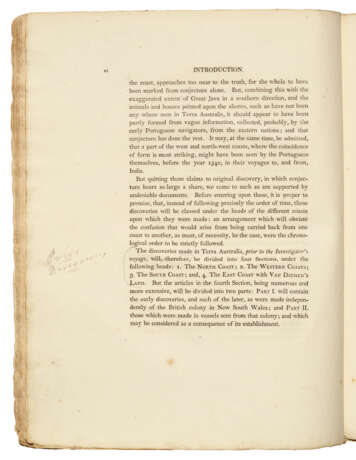
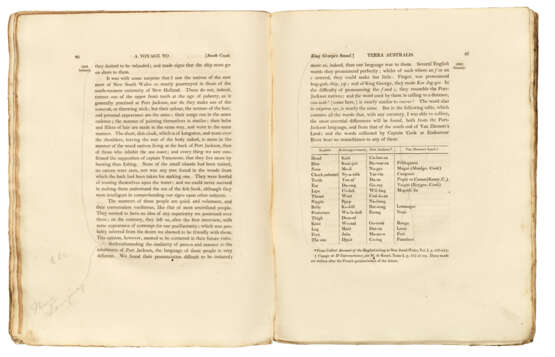
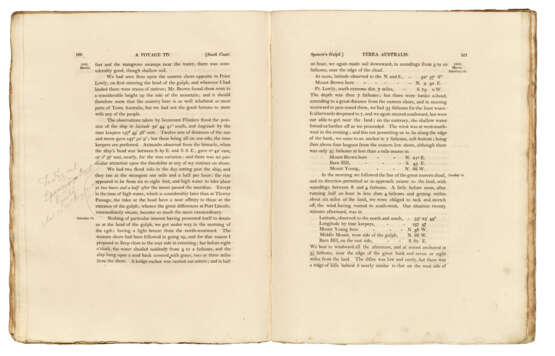
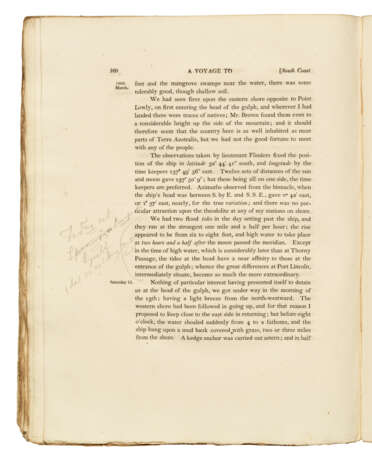
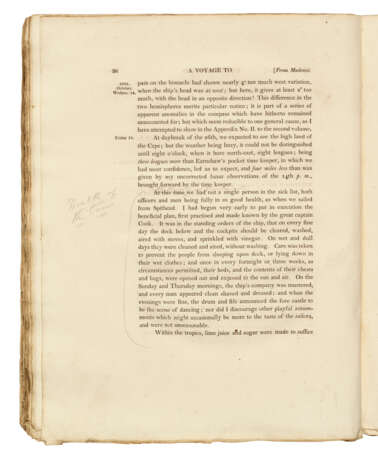

![[Matthew Flinders (1774-1814)]](/assets/image/picture_4361342/fc7a4/1a5a6350e3df1a0e6541a9cedbd040ea1733871600jpg__fix_162_205.jpeg)

